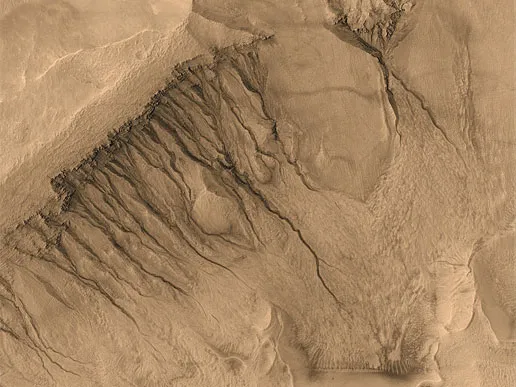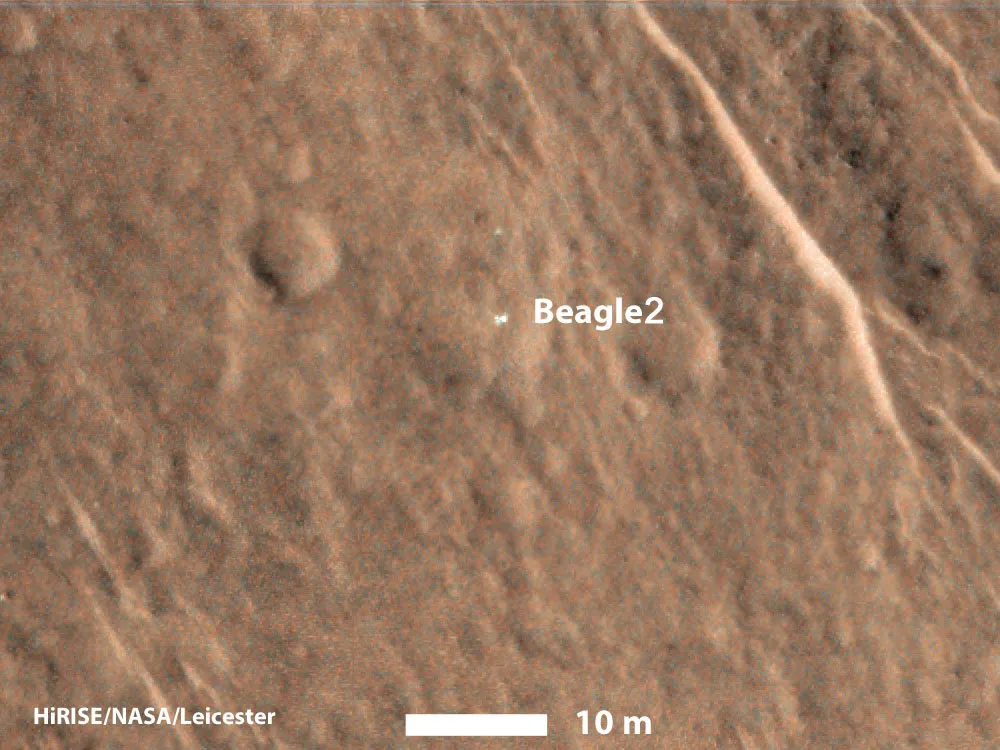Mars continues to fascinate us. Early stargazers saw it only as a small, red pinprick of light, then the advent of telescopic astronomy gave us views of its surface features and seasonal changes.
The dawn of Space Age meant we could send rovers and orbiters to the surface of Mars for the first time, unravelling the mysteries of its ancient history and finding proof that liquid water once flowed on its surface.
More on Mars

We may even be getting closer to deciphering whether Mars once had life on its surface.
Unsurprisingly, myths about Mars abound, both old and new.
Here are five strange – and completely untrue – visions of the Red Planet.
Lowell’s canals

Percival Lowell and others interpreted strange linear markings on Mars as canals engineered by sentient Martians.
This was likely the result of Italian astronomer Giovanni Schiaparelli's observations of Mars, and his report of seeing 'canali' on the planet, which means 'channels', but was mis-translated into English as 'canals'.
Future observations disproved the Mars 'canals' as an optical illusion, but author CS Lewis said the canals became "part of the popular tradition".
Mariner 4’s fly-by in 1965 conclusively disproved their existence.
War of the Worlds

HG Wells' 1898 War of the Worlds presented Martians with an inhuman appearance.
Inspired by 19th-century British colonialism and its devastating effect upon Aboriginal Tasmanians, Wells inverted the idea of aliens from beneficent beings of higher intelligence into fearsome, warlike creatures.
Orson Welles' radio broadcast

In 1938, Orson Welles narrated an adaptation of War of the Worlds for CBS.
Presented as a simulated radio broadcast, with newsflashes and eyewitness accounts, its description of a Martian invasion won 23-year-old Welles fame as an innovative storyteller.
It also became notorious due to the panic it induced among listeners.
The Face on Mars

First imaged by the Viking 1 orbiter in 1976, the Face on Mars is in the Cydonia region of Mars’s northern hemisphere.
At around 2km (1.2 miles) long, this mesa resembles a human face when viewed under certain conditions.
But the ‘face’ is a mere trick of light and shadow, much like clair-obscur effects on the Moon, appearing as a natural rock formation when seen from other angles.
Mars gremlins

In 60 years of robotic exploration of Mars, half of all missions have ended badly due to launch failures, communication losses, explosions, software bugs or crash landings.
These were colloquially attributed to ‘Mars gremlins’, honouring the mischievous folklore figures who delight in causing malfunctions in machinery.
What are your favourite Mars myths? Let us know by emailing contactus@skyatnightmagazine.com
